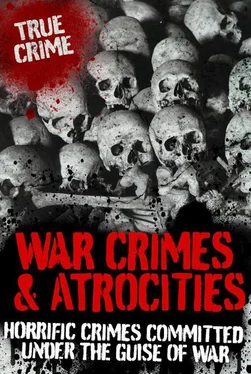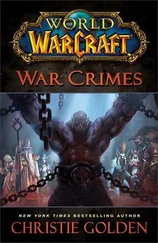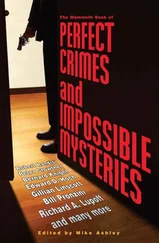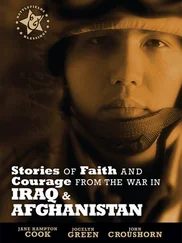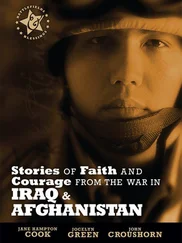SLAUGHTER AT BABI YAR
Huge explosions rocked the city of Kiev following the German takeover in September 1941. A number of buildings that housed the German administration and army were destroyed, and in retaliation, the military governor, Major General Friedrich George Eberhardt, decided to condemn to death all Jews living in the city. On 29 September, every single Jew living in Kiev was marched to a picturesque ravine, Babi Yar, situated in the Syret suburb, and the systematic slaughter of 33,771 civilians began. The killings took two days and two nights, and the naked bodies being thrown into the ravine. Only a thin layer of sand was used to cover the corpses, before the next lot of hapless victims were brought in.
In the months that followed, the Einsatzgruppen shot a further 160,000 Jews, 20,000 gypsies and Soviet prisoners of war at Babi Yar. It has been alleged that because the executioners were running out of time, they made two people stand side by side with their heads together so that one bullet would kill two people. Others were hit with shovels, and it is believed that many, including children, were buried alive.
By the middle of 1943, the Germans started to retreat and thought it best to try and destroy the evidence of their mass killings. Jews from the nearby Syretsk concentration camp were brought to Babi Yar to do their dirty work for them. They were made to dig up all the bodies, while the SS flirted with the local women, and then all the bodies were burnt in enormous funeral pyres on gravestones removed from the local cemetery. As more and more bodies were exhumed, evidence showed that many had died a slow and painful death, some desperately holding each other while others held their hands in prayer.
After the bodies had been dragged from the ravine, they were lined up between stacks of logs on top of the gravestones, in effect forming enormous ovens. They were placed with their heads facing outwards and then liberally doused with petrol. With their hair and bodies thoroughly soaked, as soon as a torch was lit they immediately burst into flame. It is estimated that as many as 5,000 bodies a day were burnt in this way. As the fire did not burn some of the larger pieces of bone, the Nazis arranged for them to be crushed into a fine powder, so that nothing was left to incriminate them. No one was ever brought to trial for this atrocity.
COUNTLESS ATROCITIES
The amount of atrocities that took place in the Soviet Union during World War II are too numerous to list, but it is fair to say that, second only to the ‘cleansing’ of the Jewish population, the massacre of Russian prisoners of war must rank as one of the greatest atrocities. During the first seven months of the war, it is estimated that over four million Soviet soldiers were captured, but by the end of February 1942, just over one million remained alive. Many died from the severe weather conditions they had to face when they were forced to march in the open day and night. They fell by the roadside in their thousands. When they did eventually reach the prisoner of war enclosures, sometimes as far away as 400 km (250 miles), they simply collapsed and died before they could even have their first meal. Held in inhumane cages, the prisoners often resorted to cannibalism after they had eaten everything else available to them, even down to the last blade of grass. For example, a dead dog, which was thrown over the wire fence, was quickly pounced upon by the prisoners and torn to pieces with their bare hands in their desperation to eat.
Thousands more died from torture or as slave labourers, who were forced to work in quarries and factories. Out of 9,000 prisoners sent to the Buchenwald concentration camp, only 800 were alive when US troops set them free in 1945. In the famous Dachau camp, only 150 survived out of a total of 10,000 prisoners of war who arrived there in 1941. It is estimated that, by the year 1944, over three million Russian prisoners of war died in this way.
The camps continued to be used after the war, still full of German, Polish, Hungarian, Rumanian, Bulgarian prisoners of war and refugees. After Stalin’s death in 1953, his successors slowly started to reform the camps. Many of the prisoners were released as the worst of the camps were shut down. Others were renovated to improve their conditions, and by the mid-1980s the population of these camps was down to about four million.
With the collapse of the Soviet Union and the fall of communism in 1991, many articles have been published about the atrocities and war crimes that took place during World War II. The estimated death toll of these atrocities is believed to be over 39.4 million, but if all the evidence came to light it is fair to say that this figure is probably grossly underestimated.
Japanese War Crimes and Atrocities
1937–45

Japanese military aggression in East Asia and the Pacific region between the years 1937 and 1945 was so bestial and savage that it is hard for most Westerners to comprehend. Among the list of atrocities carried out include slave labour, massacres, executions, medical experiments, germ and gas warfare, beheading, rape, torture, boiling victims alive, impaling on bayonets, burning alive, starvation, neglect – and so the list goes on. As many as 200,000 women were sold as sex slaves, and the years of nightmare did not end until late 1945, when the Allied forces entered the territories held by the Japanese.
Evidence of their brutality, racism and fanaticism can be seen in the mass slaughter of hundreds of thousands Chinese civilians and prisoners of war after the collapse of the Chinese capital Nanking (now called Nanjing) in 1937. It was also witnessed in the brutal death marches in which thousands of allied prisoners were murdered.
Women and children were brutally treated as were other non-combatants during the Pacific War of 1941–45. For example, Australian army nurses who served overseas during World War II had to put up with not only uncomfortable conditions in makeshift field hospitals, but also the risks and horrors of war. Out of 65 nurses who were evacuated from Singapore on board the small ship Vyner Brooke in 1942, only 24 survived to return to Australia. The bombing and sinking of the ship by Japanese planes led to the death of 12 nurses. Of the survivors, 21 were slaughtered by Japanese soldiers when they reached Bangka Island in lifeboats, and eight died as prisoners in the Japanese camps of hell. Clearly marked hospital ships and field stations were indiscriminately bombed by the Japanese, killing both patients and medical staff alike. On the Alaskan island of Attu, Japanese troops attacked a US base camp and slaughtered everyone in the field hospital.
On 14 May 1943, an Australian hospital ship, Centaur , was struck by a Japanese torpedo off the east coast of Australia. The ship was clearly marked with large red crosses prominently displayed on each side of its white funnel. As a hospital ship, it should have been protected under the Geneva convention, and the attack was classed as Japanese barbarity. The ship exploded and sank within three minutes, leaving those on board no time to send a distress signal. A total of 268 crew, doctors, nurses and other medical personnel died, leaving just 64 survivors. Another deliberate attack on a hospital ship took place while it was anchored in Darwin harbour. Again, the Manunda was clearly marked and the majority of the nurses, medical staff and crew were killed in this barbarous attack.
Japanese submarine crews regularly murdered any survivors of merchant ships that had been sunk by them. Lifeboats were either rammed or machine-gunned and survivors in the water were shot. Survivors from the US merchant ship SS Jean Nicolet were taken on board a Japanese submarine and brutally stabbed to death before being thrown into the shark-infested sea.
Читать дальше
